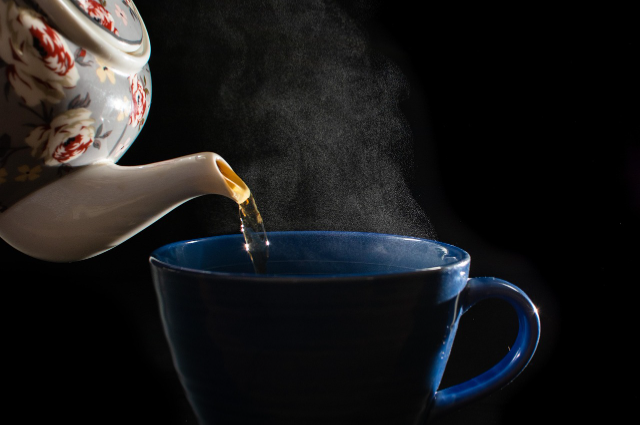
Long before fancy caf?s were set up or tea bags were invented, tea was just a small leaf floating in a pot of boiling water. While sitting and having tea with your friends and family, you may have often wondered how humanity was introduced to its favourite drink. Legend whispers that around 2737 BCE, there was a Chinese Emperor, Shen Nong, who had a strong liking for herbal drinks. One day, while having boiling water, a few wild leaves drifted in the air and fell in. The aroma rose, the colour changed, and history had just been poured into a cup! This is the beginning of the Tea revolution!
From there, tea started spreading all over the world. From being offered as a spiritual offering in Japan to symbolising royal elegance in Britain, tea was the favourite drink of every person living at that time, whether a king or a peasant. Wars were fought over it; empires taxed it, and entire cultures wrapped their days around it! Tea is more than just a drink; it is a tradition, a comfort, and for many, a way of life.
So grab your favorite mug, and take a sip through time and taste as this article explores the most beloved varieties of tea; from the bold bite of Assam, India, to the floral grace of Jasmine from Fujian, China, each variety has its own story, its flavour, and its place in the hearts of tea lovers!
English Breakfast Tea
The name might make you believe that the British even held tea under control, but that's the total opposite! The invention of this variety has two theories. The first says that it was made in New York using Chinese tea leaves. The second theory says it was made by a Scottish tea master using tea leaves from Indian, Ceylon and Keemun tea leaves, which soon caught the attention of Queen Victoria, who loved it. Whatever the truth may be, all that matters is that it's the most consumed black tea globally, with millions of people having it in the UK, Ireland and other Commonwealth countries. Black tea, with English Breakfast Tea in particular, accounts for over 75% of global tea consumption today!
Matcha
Initially discovered in China during the Tang and Song dynasties, its modern version was perfected in Japan after a Zen monk, Eisai, introduced it in the 12th century. And that s all that was required for it to hit the global market with a blast! It exploded into popularity across the US, Europe, and Southeast Asia, thanks to its health benefits. Matcha is now found in lattes, desserts, smoothies, and even skincare!
Moroccan Mint Tea
Tea was introduced to Morocco in the 18th century, allegedly as a gift from England. However, it became popular a century later when Britain had to divert more tea shipments to Morocco due to the Crimean War. The locals infused it with fresh mint and sugar, creating the iconic 'atay' that became a symbol of hospitality. Today, this tea is a part of daily life across all of North Africa, especially Morocco, Algeria, and Tunisia. It's also spreading around the world as a caffeine-free option.
Masala Chai
India's classic tea type, the roots of masala chai go back 5,000 years ago when Ayurvedic spices were added for healing purposes. Fast-forwarding to the 19th century, the British introduced black tea to India, and the Indian vendors mixed their spices and leftover tea leaves with milk and sugar to create the flavorful drink we know today. Its wonderful taste, along with ginger and cardamom, is a treat for the taste buds! Masala chai is a daily ritual for millions in the Indian subcontinent, served by street-side vendors and in homes.
Rooibos Tea
Indigenous Khoisan people in South Africa were the first to brew rooibos from the? Aspalathus linearis? Plant. Commercial cultivation began in the 1930s, thanks to Dr. Le Fras Nortier, who discovered how to germinate the seeds. It has become a national treasure today and is exported worldwide, popular in Germany, the UK, and Japan. Its caffeine-free, antioxidant-rich profile makes it a favourite among health-conscious consumers.
Russian Caravan Tea
This smoky, full-bodied blend traces its origins to the 17th and 18th centuries, when tea was transported from China to Russia via camel caravans across the 6,000-mile Silk Road. Throughout the journey, the tea in the wooden chests absorbed the smoke from nightly campfires along the way. This accidental infusion gave birth to the signature smoky flavour that Russians have come to love. The blend typically includes Lapsang Souchong, Keemun, and sometimes Oolong or Yunnan black tea, creating a rich, layered taste. Today, it's drunk in the winter with a blend of lemon, jam, or honey.
Billy Tea and Gumboot Tea
Billy Tea is no cat's name, but Australia's strong black tea boiled over a campfire in a bill can, flavoured with a gum leaf. Gumboot Tea, on the other hand, is New Zealand's no-nonsense strong black tea, which is often served with milk and sugar, remaining a daily ritual in homes and workplaces. The British had introduced black tea in both nations, but were soon outnumbered in terms of per capita drinking!
From misty mountains where ancient leaves first danced in boiling water, to cosy kitchens and street corners where it warms hands and hearts, tea has travelled a long way! The moment when we take the first sip, it's not a moment, it's a pause in time as a wave of calmness and fulfilment runs throughout our body. The flavours may differ, but the feeling is familiar. In a world that's often loud and fast, tea reminds us to slow down, gaze at the steam rising and share the silence. To sip!
Cheers to your next cup!
